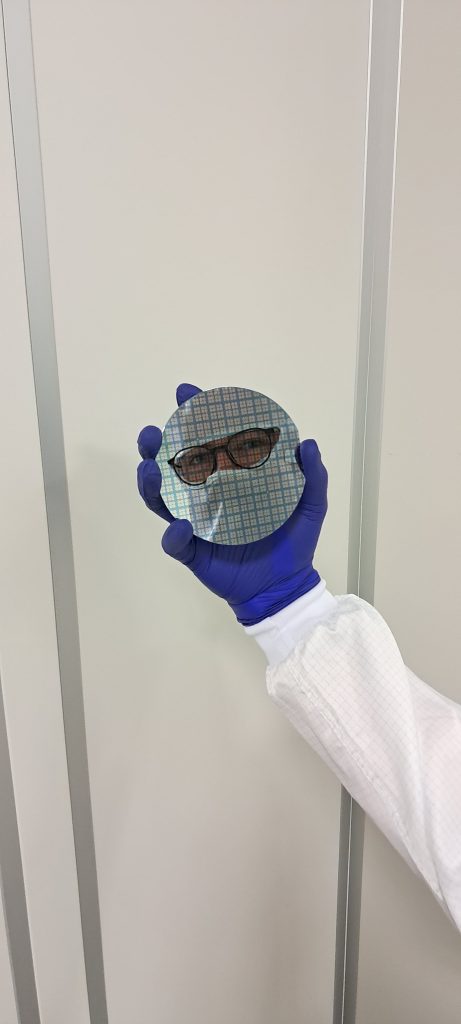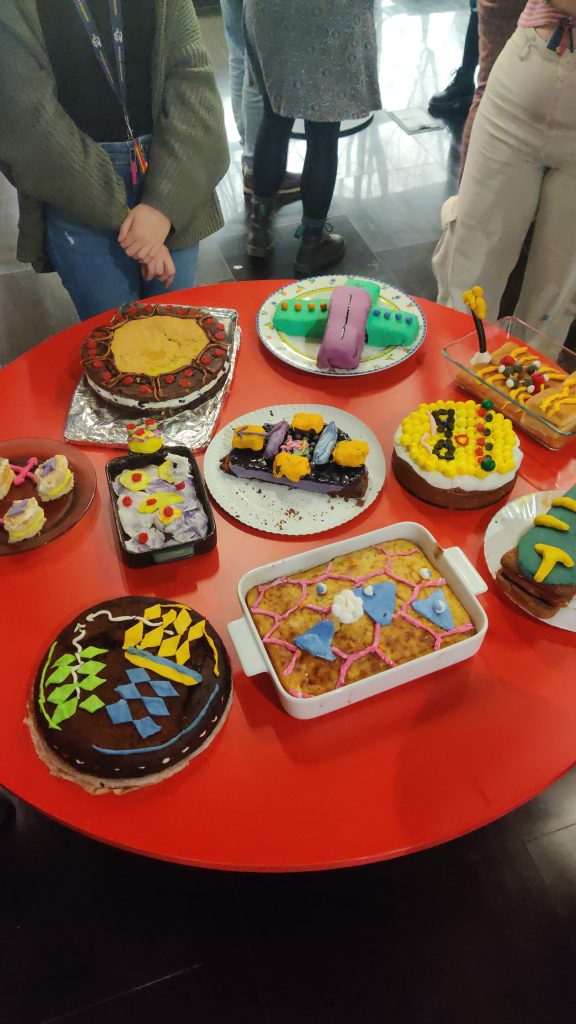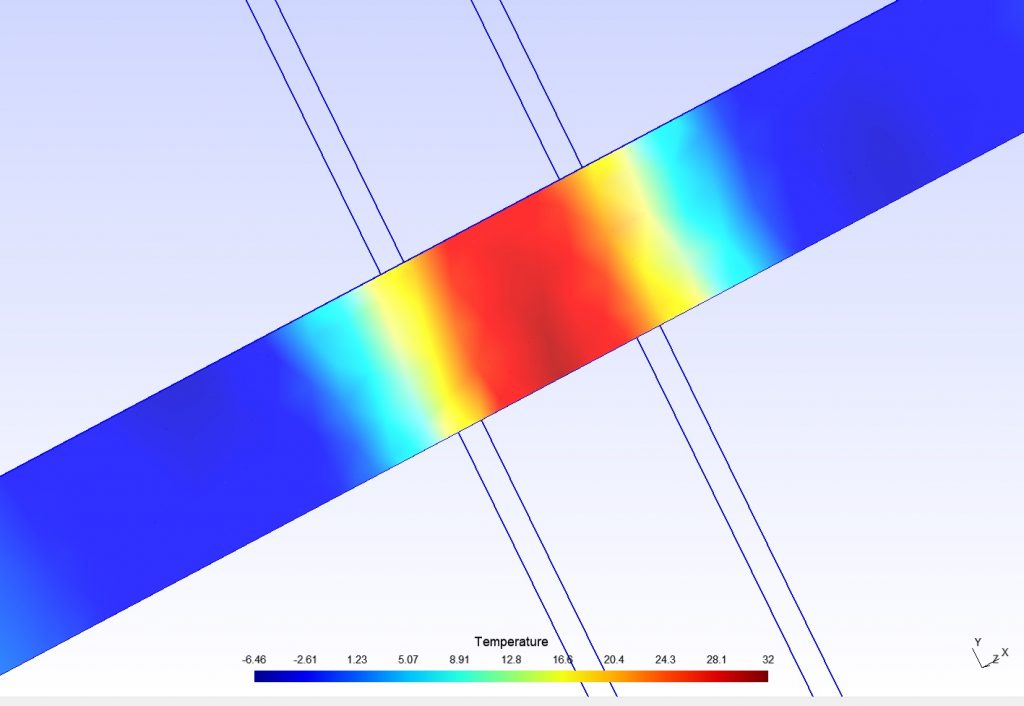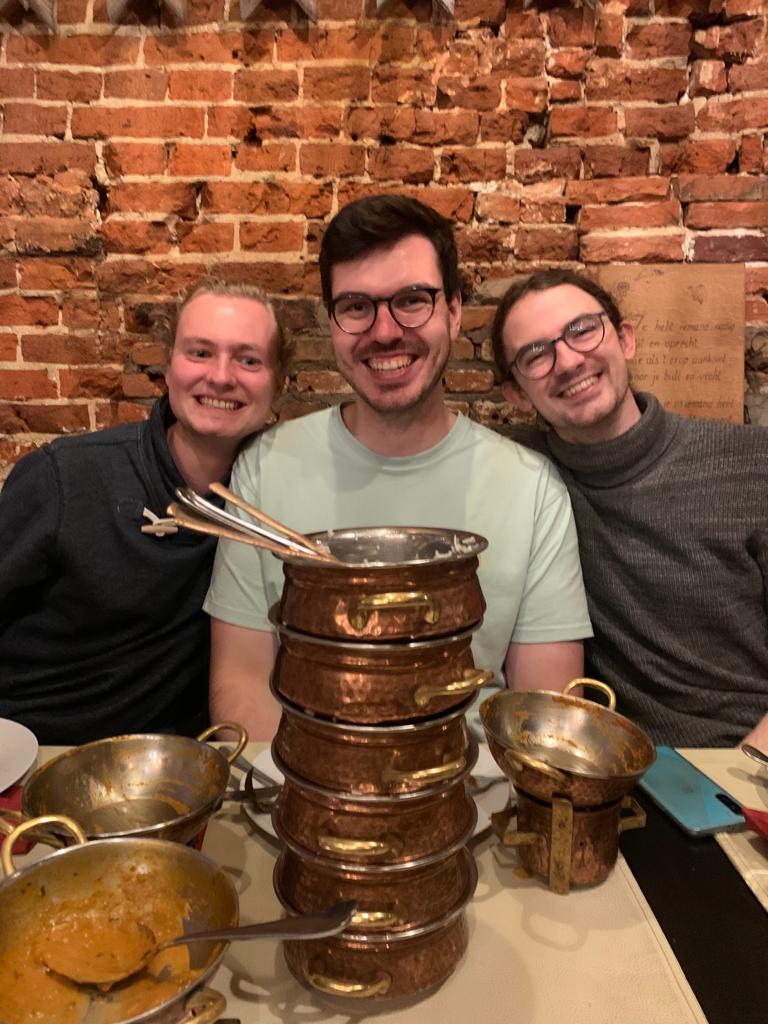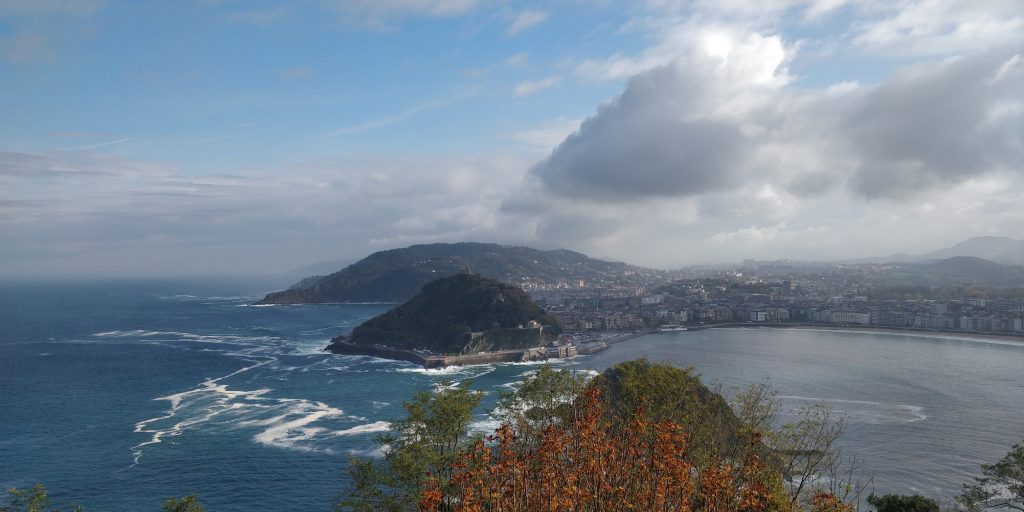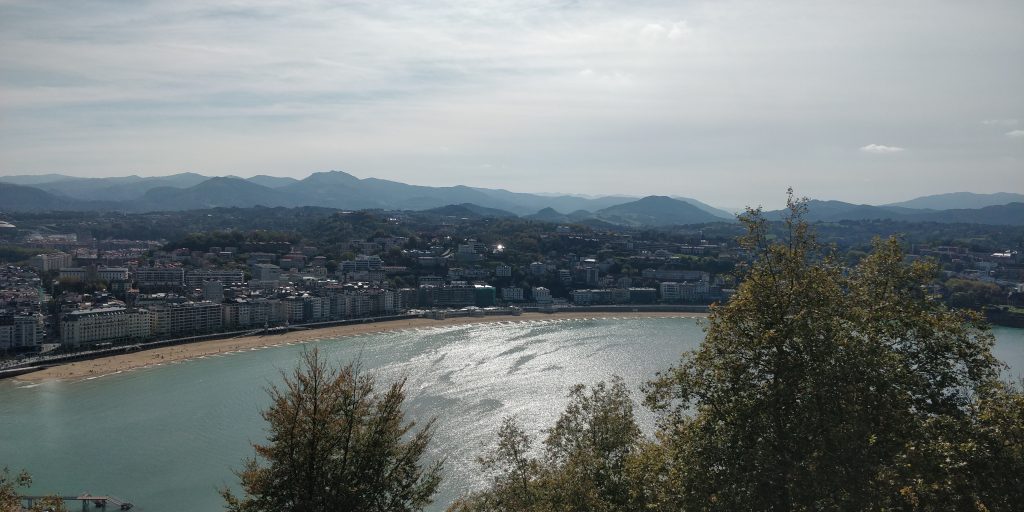I recently had the opportunity to present my research project in the form of a cake thanks to the PhD workshop at Nanogune. The humble poster is a tried-and-true method for relaying research output, but the cake is an underappreciated medium for the same. A great deal of information can be conveyed with the skillful application of icing, and the careful implantation of chocolate chip impurities in the amorphous sponge matrix. Pictured here (centre cake) is my research project, in icing. The graphene, a honeycomb of black icing balls, the gold contacts, a honey-coloured sheet of icing, and the silicon wafer a honey flavoured layer of nanometre thin sugar. Cooking and explaining my project like this was a surprisingly fun idea, and a creative way to convey information and have a tasty snack.
It makes one think that fabricating chips, something I also do on occasion, is much like baking a cake. In both cases you follow a certain recipe, carefully mix the ingredients, and bake at 1200C for 8-12 hours. In the end you emerge with something round and tasty, and that’s when the fun really begins! An icing of sugar or elemental gold, to really make your work shine. All that’s left is to carefully cut it up and share among friends and collaborators.
